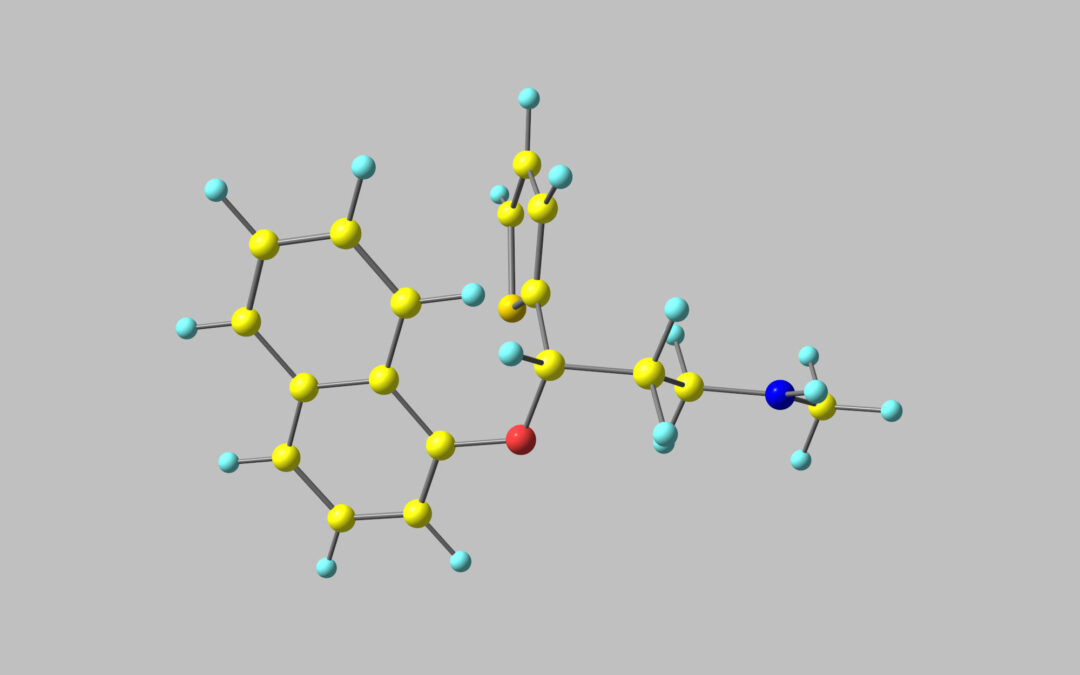The opioid epidemic continues to ravage the United States, with the number of drug overdose deaths increasing by 5% from 2018 to 2019 alone and quadrupling since 1999 1. As such, alternative forms of pain medication and pain management protocols are a pressing need, particularly in light of the persistently high prevalence of surgeries in the United States 2. To this end, a slew of methods and medications have been developed, spanning the artificial intelligence-powered development of opioid-free anesthesia regimens to novel synthetic analgesics. Recently, the serotonin-norepinephrine reuptake inhibitor duloxetine, traditionally used as an antidepressant, has emerged as an effective postoperative pain management medication, a natural extension of its use for chronic pain and osteoarthritis 3,4.
Studies have been far-reaching in demonstrating the postoperative pain management benefits of duloxetine in an astonishing range of surgical settings. A large meta-analysis of randomized controlled trials found that duloxetine was generally associated with reduced perioperative pain, diminished opioid administration at 24 hours postoperatively, and less postoperative nausea and vomiting 5. In the context of abdominal surgery, duloxetine improved the quality of postoperative recovery and reduced opioid consumption 6. In the context of lumbar canal stenosis surgery, duloxetine reduced postoperative pain, incurring no adverse side effects 7; research in the context of a lumbar laminectomy yielded similar results from a combination of duloxetine with the selective cyclooxygenase-2 inhibitor etoricoxib 8. In an orthopedic context, one study found no difference between duloxetine and opioid for pain management, establishing its place as a viable alternative to opioids 9. Finally, a recent study conducted by researchers at New York City’s Hospital for Special Surgery compared a control group given a placebo to a group of patients taking 60 mg of oral duloxetine for 14 days following surgery, alongside, as requisite, acetaminophen, ketorolac, meloxicam, or oxycodone. Consistent with previous results, they found that the patient group that received duloxetine following total knee arthroplasty experienced a 30% reduction in cumulative opioid use, alongside greater satisfaction and less pronounced effects of pain on mood and physical and professional functions 10.
Nonetheless, these results have a number of limitations. Interestingly, a study led by the group of clinicians at the Hospital for Special Surgery had previously found that duloxetine, as part of a multimodal analgesic regiment for knee arthroplasty, did not appear to reduce subacute pain with ambulation, seemingly contradicting their most recent results 11. In addition, while another recent review and meta-analysis found a significant reduction in opioid consumption within the first 48 hours postoperatively, cross-study heterogeneity and large biases precluded researchers from concluding that duloxetine clearly helps manage acute postoperative pain 12. Ostensibly, results remain mitigated and further work is required for their confirmation.
The dynamic development of alternative forms of analgesic medication will continue to form a critical pillar supporting the coordinated fight against the opioid epidemic. To this end, additional research on the optimal duration of therapy, dosing regimens, applicable surgical procedures, and any anticipated clinical barriers will reveal itself to be crucial to the sustainable implementation of duloxetine for the management of postoperative pain.
References
- Mattson CL, Tanz LJ, Quinn K, Kariisa M, Patel P, Davis NL. Trends and Geographic Patterns in Drug and Synthetic Opioid Overdose Deaths — United States, 2013–2019. MMWR Morb Mortal Wkly Rep. 2021;70(6):202-207. doi:10.15585/MMWR.MM7006A4
- Kremers HM, Larson DR, Crowson CS, et al. Prevalence of total hip and knee replacement in the United States. J Bone Jt Surg – Am Vol. 2014. doi:10.2106/JBJS.N.01141
- Citrome L, Weiss-Citrome A. A systematic review of duloxetine for osteoarthritic pain: What is the number needed to treat, number needed to harm, and likelihood to be helped or harmed? Postgrad Med. 2012. doi:10.3810/pgm.2012.01.2521
- Myers J, Wielage RC, Han B, et al. The efficacy of duloxetine, non-steroidal anti-inflammatory drugs, and opioids in osteoarthritis: A systematic literature review and meta-analysis. BMC Musculoskelet Disord. 2014. doi:10.1186/1471-2474-15-76
- Zorrilla-Vaca A, Stone A, Caballero-Lozada AF, Paredes S, Grant MC. Perioperative duloxetine for acute postoperative analgesia: A meta-analysis of randomized trials. Reg Anesth Pain Med. 2019. doi:10.1136/rapm-2019-100687
- Castro-Alves LJ, Oliveira De Medeiros ACP, Neves SP, et al. Perioperative Duloxetine to Improve Postoperative Recovery after Abdominal Hysterectomy: A Prospective, Randomized, Double-Blinded, Placebo-Controlled Study. Anesth Analg. 2016. doi:10.1213/ANE.0000000000000971
- Govil N, Parag K, Arora P, Khandelwal H, Singh A, Ruchi. Perioperative duloxetine as part of a multimodal analgesia regime reduces postoperative pain in lumbar canal stenosis surgery: A randomized, triple blind, and placebo-controlled trial. Korean J Pain. 2020. doi:10.3344/kjp.2020.33.1.40
- Attia JZ, Mansour HS. Perioperative Duloxetine and Etoricoxibto improve postoperative pain after lumbar Laminectomy: A randomized, double-blind, controlled study. BMC Anesthesiol. 2017. doi:10.1186/s12871-017-0450-z
- Kim MS, Koh IJ, Choi KY, Yang SC, In Y. Efficacy of duloxetine compared with opioid for postoperative pain control following total knee arthroplasty. Suppiah V, ed. PLoS One. 2021;16(7):e0253641. doi:10.1371/JOURNAL.PONE.0253641
- Effect of Duloxetine on Opioid Use after Total Knee Arthroplasty. A Double-Blinded Randomized Control Trial | 46th Annual Regional Anesthesiology and Acute Pain Medicine Meeting. https://epostersonline.com/ASRASPRING21/node/1028.
- YaDeau JT, Brummett CM, Mayman DJ, et al. Duloxetine and Subacute Pain after Knee Arthroplasty when Added to a Multimodal Analgesic Regimen: A Randomized, Placebo-controlled, Triple-blinded Trial. Anesthesiology. 2016. doi:10.1097/ALN.0000000000001228
- de Oliveira Filho GR, Kammer RS, dos Santos H de C. Duloxetine for the treatment acute postoperative pain in adult patients: A systematic review with meta-analysis. J Clin Anesth. 2020. doi:10.1016/j.jclinane.2020.109785





Recent Comments